Charleston Currents #11.47 | Oct. 14, 2019
ROAD TRIP. Photographer Cynthia Bledsoe of West Ashley spotted a lot of roadside curiosities during a trip to the American Southwest. Check out some of her images in this week’s Photo Essay below.
 FOCUS: As local governments ban plastics, port grows plastics business
FOCUS: As local governments ban plastics, port grows plastics business
BRACK: New York trip was a delight for the ears and eyes
IN THE SPOTLIGHT: Magnolia Plantation and Gardens
PHOTO ESSAY: On the road again
FEEDBACK: Send us your thoughts
MYSTERY PHOTO: Another old building
S.C. ENCYCLOPEDIA: Author Julia Peterkin
CALENDAR: League of Women Voters to hold 10 candidate forums
As local governments ban plastics, port grows plastics business
By Lindsay Street, Statehouse correspondent | Plastic is a growing export business in South Carolina, but the tiny plastic pellets could also be a big environmental hazard — and the next battle in the so-called War on Plastic.
State Ports Authority CEO Jim Newsome last week called plastic transportation “a significant part” of the port’s growth strategy.
But downstream from the port’s headquarters on the Cooper River, Sullivans Island Mayor Pat O’Neil said he’s worried. The town’s single-use plastic ban appeared to curb litter. Then in July, a spill of plastic pellets (also known as nurdles) from Frontier Logistics at the port traveled to its beaches. Despite cleanup efforts, pellets remain in the sand, the mayor said. The pellets are used in the production of plastic homegoods.
“Industry is important (and) economic growth is important but we need to be selective and prudent in the types of industries we encourage,” O’Neil said.
Eighteen local governments have passed plastic bag bans, but there are few protections in place in the state from pre-production plastic. Frontier Logistics can avoid monetary penalties for the spill as long as it attends remediation meetings, according to a July 26 letter from the S.C. Department of Health and Environmental Control (DHEC).
“Here we are doing everything we can to keep plastic out of the environment, and here are those nurdles,” said S.C. Sen. Sandy Senn, R-Charleston, told sister publication Statehouse Report. Read the full story here.
Responsible transportation of plastic pellets is a “high priority” among environmental advocacy groups, according to Coastal Conservation League Land, Water and Wildlife Program Director Emily Cedzo.
“It’s a burgeoning business for South Carolina right now. The onus is on us to find the solutions,” she said. “Who are we responsible to? The public and environment or the plastics industry?”
But beyond whether the state should prevent local governments from enacting single-use plastics bans for bags or straws or sporks (Senate Bill 394) or if the state should have its own statewide ban, the legislature currently does not have any other plastic legislation on its agenda for the 2019-2020 session.
And in the meantime, nurdles are becoming a big business at the port. In 2017, the port saw 79,000 tons of pellets exported. In 2018, that amount grew by nearly three times: 226,000 tons of pellets. Another company, A&R Logistics, is expected to bring an additional 132,000 tons of pellets once its warehouse opens in Berkeley County
“I doubt anyone is going to tell (transporters) not to come because it’s one of the few things we get a leg up on China … They buy those plastic pellets from us,” Senn said. She added, “But (the companies have) got to be more responsible.”
 In related news, overall business at the port continues to surge as it just had its best September ever on record for cargo volumes, according to a press release.
In related news, overall business at the port continues to surge as it just had its best September ever on record for cargo volumes, according to a press release.
“Our productivity is made possible by our incredibly talented team and the entire maritime community, all working together to keep freight moving,” Newsome said.
The Wando Welch and North Charleston container terminals handled nearly 195,000 twenty-foot equivalent container units (TEUs) in September, up 12.5 percent from a year ago. The port has handled 638,600 TEUs in the first three months of fiscal year 2020, up 10 percent year-over-year.
- Have a comment? Send to: editor@charlestoncurrents.com
BRACK: New York trip was a delight for the ears and eyes
By Andy Brack, editor and publisher | A weekend family trip to New York City was simply delightful, an adjective we never thought of using to describe the Big Apple.
 The weather was moderate. People were relatively friendly. The bagels and pizza were awesome. And two attractions provided a “wow” that still lingers.
The weather was moderate. People were relatively friendly. The bagels and pizza were awesome. And two attractions provided a “wow” that still lingers.
First came the Metropolitan Opera’s new production of “Porgy and Bess,” the famous George Gershwin opera set in Charleston with the words, or libretto, by DuBose Heyward and Ira Gershwin. The production was everything — and more — that was recorded in a flattering review in The New York Times as a masterpiece of a “performance so authoritative and gripping.”
Noted critic Anthony Tommasini, “David Robertson led a vigorous yet nuanced performance, the finest conducting of ‘Porgy’ I’ve heard. From the start, with the bustling orchestral introduction, he never tried to jazz up the score superficially, plumbing the music for inner voices, pungent harmonies, layered orchestral strands and rhythmic complexities.”
Not only were the lyric performances by Eric Owens (Porgy), Angel Blue (Bess), Golda Schultz (Clara) and Denyce Graves (Maria) simply awe-inspiring, but the rotating set of a rundown Charleston mansion seemed to be its own looming character in the opera.
The show, at the Met in Lincoln Center for the first time in almost 30 years, runs through Feb. 1, 2020.
Just as stimulating was a visit to the Guggenheim Museum where we saw paintings first shown in the South in the 1930s at the Gibbes Museum, and later at its Realm of Spirit show in 2016.
The New York museum displayed hundreds of pieces, including dramatic works by Kandinsky, Picasso, Modigliani, Bauer, Chagall and Leger that were purchased by mining industrialist Solomon Guggenheim. Also enjoyable were pieces by Francis Bacon, Jackson Pollock, Helen Frankenthaler and Piet Mondrian.
This New York trip was music for our ears and sights to be seen time and time again.
TURNING TO STATEWIDE AFFAIRS, state legislators need to be a little bit like reporters in the days ahead as they consider the fate of Santee Cooper, the state-backed utility that fell into trouble when a project to build new nuclear reactors spectacularly died.
 In 2020 as lawmakers consider the future of the utility, its power plants, its lakes and its prowess in economic development in our poor state, they need to be more objective. They need to look at Santee Cooper’s fate from all sides and impacts, instead of rushing to political judgment that ignores fiscal common sense and opportunity costs. In other words, they don’t need to sell when the price may be low. Might it not be better to fix whatever went wrong and hold on to the asset until it has more value?
In 2020 as lawmakers consider the future of the utility, its power plants, its lakes and its prowess in economic development in our poor state, they need to be more objective. They need to look at Santee Cooper’s fate from all sides and impacts, instead of rushing to political judgment that ignores fiscal common sense and opportunity costs. In other words, they don’t need to sell when the price may be low. Might it not be better to fix whatever went wrong and hold on to the asset until it has more value?
The $9 billion failure in 2017 of the nuclear project between the minority partner, Santee Cooper, and its privately-held partner, SCE&G, led to lots of public angst — and rightfully so. In the end, SCE&G was sold to Dominion Energy and a pack of state officials have had their sights on dumping Santee Cooper or turning over its management to someone else.
With public trust in Santee Cooper at a low, many at the Statehouse have seemed eager to move on as corporate hawks have dumped hundreds of thousands of dollars into lobbying efforts to get a crack at owning or running Santee Cooper. Do you think they’d be circling like buzzards if they thought Santee Cooper and its assets were not worth it? Maybe a better course would be to let the utility right its own leaky ship with a new approach to deal with what it characterizes as “challenging issues facing our company.”
In recent weeks, the gray lady of Santee Cooper seemed to wake up, unveiling a bold reform plan that includes paying down debt more quickly without rate increases, preserving energy reliability, reducing carbon emissions and increasing use of renewable solar energy by 1,000 megawatts, which is the equivalent of two medium power plants.
When the time comes next session to consider Santee Cooper’s future, state legislators need to set aside preconceived notions. They need to ignore the millions of dollars spent to influence them. And they need to do right by the taxpayers of South Carolina by objectively considering what’s best for the state. Have open, not closed, minds on Santee Cooper’s future. To do less is to fail.
- Andy Brack’s latest book, “We Can Do Better, South Carolina,” is now available in paperback and for Kindle via Amazon.
- Have a comment? Send to: editor@charlestoncurrents.com
SPOTLIGHT: Magnolia Plantation and Gardens
 The public spiritedness of our underwriters allows us to bring Charleston Currents to you at no cost. Today we shine our spotlight on Magnolia Plantation and Gardens, founded in 1676 by the Drayton family. It has survived the centuries and witnessed the history of our nation unfold before it from the American Revolution through the Civil War and beyond. It is the oldest public tourist site in the Lowcountry and the oldest public gardens in America, opening its doors to visitors in 1870. Open 365 days a year, Magnolia offers its visitors splendid tours of nature and history and the role African-Americans played in the development of its award-winning Romantic-style gardens.
The public spiritedness of our underwriters allows us to bring Charleston Currents to you at no cost. Today we shine our spotlight on Magnolia Plantation and Gardens, founded in 1676 by the Drayton family. It has survived the centuries and witnessed the history of our nation unfold before it from the American Revolution through the Civil War and beyond. It is the oldest public tourist site in the Lowcountry and the oldest public gardens in America, opening its doors to visitors in 1870. Open 365 days a year, Magnolia offers its visitors splendid tours of nature and history and the role African-Americans played in the development of its award-winning Romantic-style gardens.
- VISIT www.magnoliaplantation.com to learn how you can experience a complete plantation experience.
- NEW this year: Lights of Magnolia, Nov. 15-March 15
- Click here to learn about events and what’s new.
- To meet all of our underwriters, click here.
On the road again
Special to Charleston Currents | West Ashley resident and avid photographer Cynthia Bledsoe and her husband Michael Kaynard last month returned from a 4,500-mile automobile trip to Colorado and New Mexico.
“I think we stopped or drove through every possible state between here and there,” she said. Along the way, she snapped several roadside curiosities, some of which we share here.

World’s largest Czech egg, Wilson, Kansas
- Have a comment? Send to: editor@charlestoncurrents.com
Send us your thoughts
We’d love to get your impact in one or more ways:
Send us a letter: We love hearing from readers. Comments are limited to 250 words or less. Please include your name and contact information. Send your letters to: editor@charlestoncurrents.com. | Read our feedback policy.
Tell us what you love about the Lowcountry. Send a short comment – 100 words to 150 words – that describes something you really enjoy about the Lowcountry. It can be big or small. It can be a place, a thing or something you see. It might the bakery where you get a morning croissant or a business or government entity doing a good job. We’ll highlight your entry in a coming issue of Charleston Currents. We look forward to hearing from you.
Another old building
Here’s a photo of another old building in the tri-county area. What and where is it? Send your guess to: editor@charlestoncurrents.com. And don’t forget to include your name and the town in which you live.
Our previous Mystery Photo
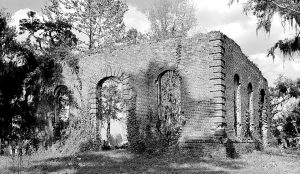 Our Oct. 4 mystery, “Old picture of an old building” showed the ruins of Biggin Church, a site about two miles from Moncks Corner that burned three times since first being built in 1711. It is on the National Register of Historic Places.
Our Oct. 4 mystery, “Old picture of an old building” showed the ruins of Biggin Church, a site about two miles from Moncks Corner that burned three times since first being built in 1711. It is on the National Register of Historic Places.
Several readers thought the photo showed some other famous South Carolina ruins, such as the St. Helena Island Chapel of Ease or old Sheldon Church, both in Berkeley County. So hats off to those who correctly identified the Berkeley County site: Chris Brooks of Mount Pleasant; Callie Walpole and Stephen Yetman, both of Charleston; George Graf of Palmyra, Va.; Marnie Huger of Richmond, Va.; Allan Peel of San Antonio, Texas; and Jay Altman of Columbia.
Huger provided some context: “It was likely named for Biggin Hill in the London Borough of Bromley. Originally constructed in 1711, it was the church of the parish of St. John’s, Berkeley. The church has burned 3 times; the ruins are from the church built in 1761 and its reconstruction in 1781.”
Segars said that after the church burned in 1886 [although it could have been later] due to a forest fire, it was not rebuilt because of the economic hard times after the Civil War. “The structure soon became known as ‘the brickyard’ because so many of the brick were stolen from the walls, leaving only two walls of the original 30′ x 60′ structure.”
Peel added, “The original parishioners of the Biggin Church were mostly Huguenots, who were French Calvinists / Protestants in the 16th and 17th centuries. They followed the teachings of theologian John Calvin but were being persecuted by the French Catholic government in the 17th century so they fled France and created Huguenot settlements all over Europe, Africa, and the USA, including modern-day Berkeley County in South Carolina.”
Altman provided the text of a historic marker outside the church:
Side one: “These ruins are all that remains of Biggin Church, built soon after the America Revolution as the parish church of St. John’s Berkeley Parish. This large parish, created in 1706 by the Anglican Church, was long and narrow, with distinct Upper, Middle, and Lower areas. The church here was named for nearby Biggin Creek, which flows into the Cooper River.”
Side two: “The first building on this site was a log building. It was replaced ca.1710-1715 by a brick church witch burned in a forest fire in 1755. A brick church covered in stucco built here ca.1767 was burned by the British in 1781. These ruins are of the fourth and last church here, used infrequently after the Civil War. The church burned in a forest fire in 1899.”
- Send us a mystery: If you have a photo that you believe will stump readers, send it along (but make sure to tell us what it is because it may stump us too!) Send it along to editor@charlestoncurrents.com.
HISTORY: Author Julia Peterkin
S.C. Encyclopedia | Pulitzer Prize-winning author Julia Peterkin was born on October 31, 1880, in Laurens County, the youngest daughter of Julius Mood, a schoolteacher, and his wife, Alma Archer. Julius Mood went on to become a doctor and to practice medicine in Sumter. Alma Mood died of tuberculosis when Peterkin was eighteen months old, and Julius Mood soon remarried. Peterkin was sent to live with her paternal grandparents, while her older sisters stayed with their father and his new wife. The loss of her mother and the sense that she had been “given away” would later become a haunting refrain in Peterkin’s fiction.
Peterkin graduated from Converse College in 1896 and went on to earn a master’s degree from Converse a year later. She taught in a one-room school in Fort Motte; married the cotton planter William George Peterkin on June 3, 1903; and moved to Lang Syne Plantation near St. Matthews, where she would live for the rest of her life. Peterkin had one son, William George Peterkin, Jr., and spent the first twenty years of her marriage trying to fill the archaic role of plantation mistress.
Peterkin did not begin to write until she was forty years old. She began by telling tales of plantation life to her piano teacher, Henry Bellamann, a poet with literary leanings who encouraged her to write them down. Ambition soon led her to approach famous writers and critics, notably Joel Spingarn, Carl Sandburg, and H. L. Mencken, even while secretly taking a correspondence course on magazine writing. Her stories found a home in Emily Clark’s new magazine the Reviewer and in Mencken’s more widely read Smart Set. Within two years Peterkin had contracted to publish a book with Alfred A. Knopf, then just beginning to establish a distinguished reputation. The result was Green Thursday (1924), a collection of linked short stories about a black farm laborer named Killdee; his wife, Rose; and their foster daughter, Missie. Peterkin drew on what she knew about the lives of real people at Lang Syne, rendering some of them so acutely that the portraits are recognizable to their descendants. Yet the emotional force of many of the tales comes from her own life experience, especially the trauma of losing her mother and growing up apart from her father.
Peterkin’s stark, poignant stories about black country folk were among the first flowerings in the movement toward ironic, realistic regional fiction later known as the Southern Renaissance. In 1929 she became the first southern writer to win the Pulitzer Prize for fiction, for the novel Scarlet Sister Mary (1928). Two of her books, Black April (1927) and Scarlet Sister Mary, became best-sellers, and her last, Roll, Jordan, Roll (1933), with photographs by her friend Doris Ulmann, was one of the groundbreaking documentaries of the 1930s.
White southerners found Peterkin’s early stories offensive and considered her a traitor to her race, though their animosity faded as her celebrity grew. Her mature work gained international fame and was unlike anything that had come before it. Peterkin had the gift of luring mainstream white audiences into what was to them a strange new world: the community of black farmworkers who lived by traditions that were largely African in origin. Whites seldom appear in her work, except in trivial roles.
Peterkin had a great ear for language and eventually worked out a literary rendering of the difficult Gullah dialect that was true to the cadences and flavor of the original but understandable to ordinary Americans. Her novels were considered racy and subversive, partly for their frank celebration of sex but also because they dared to reveal hard truths about how blacks were forced to live in the Jim Crow South. Taken together, Green Thursday, Black April, Scarlet Sister Mary, and Bright Skin (1932) chronicle the decline of the plantation economy and the wrenching personal and social forces that drove African Americans to leave the rural South.
Peterkin’s stories won high praise from black writers and scholars associated with the Harlem Renaissance, including W. E. B. Du Bois, Walter White, Alain Locke, and Countee Cullen. African American novelists who emerged soon after, including Zora Neale Hurston, show clear signs of Peterkin’s influence. During the Depression, Peterkin’s fiction fell out of fashion, and it was largely ignored during the 1970s and 1980s, when the works of many other women writers were resurrected and appreciated. Yet her best work has the timeless quality of great literature and seems as fresh and vibrant in the twenty-first century as it did in the 1920s.
Peterkin died in Orangeburg on August 10, 1961, of congestive heart failure. She was buried in the family plot across the street from the Episcopal Church near Fort Motte. In 1988, Peterkin was posthumously inducted into the South Carolina Academy of Authors.
— Excerpted from an entry by Susan Millar Williams. This entry may not have been updated since 2006. To read more about this or 2,000 other entries about South Carolina, check out The South Carolina Encyclopedia, published in 2006 by USC Press. (Information used by permission.)
League of Women Voters to hold 10 candidate forums
Staff reports | The League of Women Voters of the Charleston Area will hold a series of non-partisan candidate forums before local elections on Nov. 5. For a full list, click here. Of particular note:
 Oct. 16: Charleston City Council Forum, Districts 1 and 3. Burke High School Media Center, 244 President St., Charleston. Co-sponsored with Delta Sigma Theta Sorority Incorporated, Charleston Alumnae Chapter, AAUW Charleston.
Oct. 16: Charleston City Council Forum, Districts 1 and 3. Burke High School Media Center, 244 President St., Charleston. Co-sponsored with Delta Sigma Theta Sorority Incorporated, Charleston Alumnae Chapter, AAUW Charleston.
Oct. 16: North Charleston Mayoral Forum. City Hall Council Chambers, 2500 City Hall Lane, North Charleston. Co-sponsored with WCSC Live 5 News.
Oct. 17: Charleston City Council Forum, Districts 5, 7, 9 and 11. Grace United Methodist Church, 1601 Sam Rittenberg Blvd., Charleston. Co-sponsored with AAUW Charleston..
Oct. 19: Charleston Mayoral Forum. Holliday Alumni Center, The Citadel, 69 Hagood Ave., Charleston. Co-sponsored with the Citadel School of Humanities and Social Sciences, WCSC Live 5 News.
Oct. 21: North Charleston Council Seats, City Hall Council Chambers, 2500 City Hall Lane, North Charleston.
Also on the calendar:
![]() Dungee Center dedication: 10 a.m. Oct. 15, 1099 King St., Charleston. Mayor John Tecklenburg and members of Charleston City Council will dedicate a community center to honor the Rev. Alma Dungee, who is known for her lifelong work as a community leader and activist.
Dungee Center dedication: 10 a.m. Oct. 15, 1099 King St., Charleston. Mayor John Tecklenburg and members of Charleston City Council will dedicate a community center to honor the Rev. Alma Dungee, who is known for her lifelong work as a community leader and activist.
Nevermore, the play: Oct. 16 to Nov. 3, Dock Street Theatre, 135 Church St., Charleston. Charleston Stage will present Nevermore! Voyage Into the Netherworld, a play that speculates on an 1847 voyage by author Edgar Allan Poe after which he was found mad and soon died. The play features scenes from Poe’s stories and includes information on his real visit to Sullivan’s Island in 1817. More information. Tickets are $34 to $67 with some discounts.
Coming to the Gaillard. Check out these awesome coming events at the Charleston Gaillard Center, 95 Calhoun St., Charleston:
FREE: Youth Poetry Slam: 2 p.m. Oct. 19. Artist-in-Residence Marcus Amaker will host this event as part of the Free Verse Festival. It brings together young poets of all levels for a friendly competition. The top three winners of the slam will have the opportunity to perform later that night for Free Verse, Charleston’s poetry festival. Prizes will also be awarded. Register.
Chick Corea Trio: 7:30 p.m. Oct. 29. Jazz impresario Chick Corea will bring together bass powerhouse Christian McBride and drum master Brian Blade in a trio that earned two Grammy Awards for their first outing, 2014’s landmark 3-CD set Trilogy. Learn more about the trio and show here. Tickets are $36 to $86.
Pictures at an Exhibition: 7:30 p.m. Oct. 25 and Oct. 26. The Charleston Symphony offers a special collaboration with award-winning watercolorist, Mary Whyte. A Charleston-based artist with an international reputation, Whyte will debut her collection of portraits We the People alongside the Charleston Symphony’s performance of Respighi’s Trittico Botticelliano (“Three Botticelli Pictures”), Copland’s Lincoln Portrait, and Mussorgsky’s Pictures at an Exhibition. Images of Whyte’s paintings, a portrait of one veteran from each state, will appear on stage throughout the performance. Tickets are $25 to $114.
Free Verse Festival: Through Oct. 20 in locations around Charleston with a special event Oct. 28. The third year of the Free Verse Festival, Charleston’s first poetry festival, seeks “to uplift the community by providing eclectic poetry events and workshops at multiple venues in downtown and West Ashley.” Learn more online.
AFFA Gala 2019: 6 p.m., Nov. 1, The Cedar Room, 701 East Bay St., Charleston. You can have one of the best nights of the year with this annual fund-raiser for AFFA that is replete with a cocktail hour, silent auction, dinner, live auction and entertainment by the Emerald Empire Band. Tickets: $180. Learn more now.
Holiday Festival of Lights: Nov. 15 to Dec. 31, James Island County Park. For the 30th year in a row, the Holiday Festival of Lights returns to make merry magical memories with its vibrant light show is one of Charleston’s most cherished holiday events, featuring an estimated two million dazzling lights. The Holiday Festival of Lights is open every evening, rain or shine, from Nov. 15 – Dec. 31, 2019. The festival opens at 5:30 p.m. nightly and closes at 10 p.m. Sunday through Thursday and 11 p.m. Friday and Saturday. More.
Early morning bird walks at Caw Caw: 8:30 a.m. every Wednesday and Saturday, Caw Caw Interpretive Center, Ravenel. You can learn about habitats and birds, butterflies and other organisms in this two-hour session. Registration is not required, but participants are to be 15 and up. $10 per person or free to Gold Pass holders. More: http://www.CharlestonCountyParks.com.
AREA MARKETS
WEDNESDAYS. The West Ashley Farmers Market is every Wednesday from 3 p.m. to 7 p.m. in Ackerman Park off Sycamore Avenue in West Ashley. The last week of the market will be the first week of October. More.
FRIDAYS/SATURDAYS: Night Market. Every Friday and Saturday from 6:30 p.m. to 10:30 p.m. for the rest of the year, you can shop with 108 vendors, including artists and craftsmen, at the night market on Market Street between East Bay and Church streets. It’s more than four blocks of local shopping and fun. Free.
SATURDAYS: Johns Island Farmers Market operates each Saturday from 9:30 a.m. to 1:30 p.m. year-round with more than 50 local farmers and vendors, food trucks, music and more. The market is located on the campus of Charleston Collegiate School, 2024 Academy Road, Johns Island
SATURDAYS: The Charleston Farmers Market is open 8 a.m. to 2 p.m. in Marion Square each Saturday through Nov. 30. More info.
NOTE: The Mount Pleasant Farmers Market weekly market on Tuesdays finished in September. The next opportunity to shop is a special Dec. 7 holiday market and craft show at the market pavillion at Moultrie Middle School, 645 Coleman Blvd., Mount Pleasant. Time: 11 a.m to 4 p.m. Free parking. Lots of activities. More info.
- If you have an event to list on our calendar, please send it to feedback@charlestoncurrents.com for consideration. The calendar is updated weekly on Mondays.
If you like what you’ve been reading, how about considering a contribution so that we can continue to provide you with good news about Charleston and the Lowcountry. Interested? Just click the image below.
OUR UNDERWRITERS
Charleston Currents is an underwriter-supported weekly online journal of good news about the Charleston area and Lowcountry of South Carolina.
- Meet our underwriters
- To learn more about how your organization or business can benefit, click here to contact us. Or give us a holler on the phone at: 843.670.3996.
OUR TEAM
Charleston Currents offers insightful community comment and good news on events each week. It cuts through the information clutter to offer the best of what’s happening locally.
- Mailing address: P.O. Box. 22261 | Charleston, SC 29413
- Phone: 843.670.3996
Charleston Currents is provided to you weekly by:
- Editor and publisher: Andy Brack, 843.670.3996
- Contributing editor, common good, Fred Palm
- Contributing editor, money: Kyra Morris
- Contributing editor, Palmetto Poem: Marjory Wentworth
- Contributing editor, real estate: Digit Matheny
- Contributing photographer: Rob Byko
SUBSCRIBE FOR FREE
Subscriptions to Charleston Currents are free.
- Click here to subscribe.
- Unsubscribe. We don’t want to lose you as a reader of Charleston Currents, but if you must unsubscribe, you will have to do it through the email edition you receive. Just go to the bottom of any of your weekly newsletters and click the “unsubscribe” function. If that doesn’t work, please send us an email with the word “unsubscribe” in the subject line.
- © 2008-2019, Statehouse Report, LLC. All rights reserved. Charleston Currents is published every Monday by Statehouse Report LLC, PO Box 22261, Charleston, SC 29413.









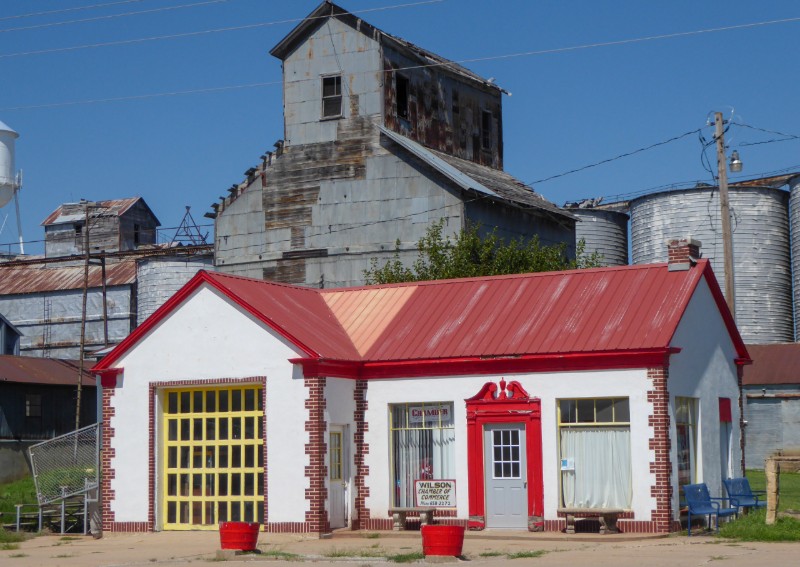
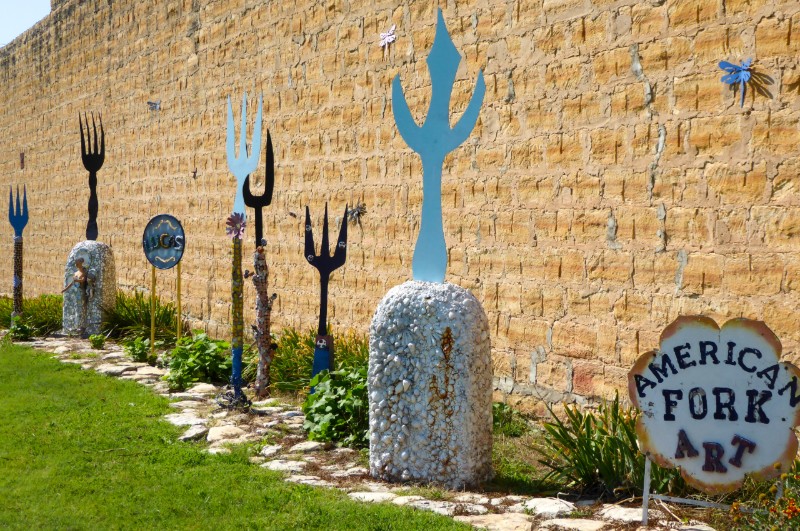

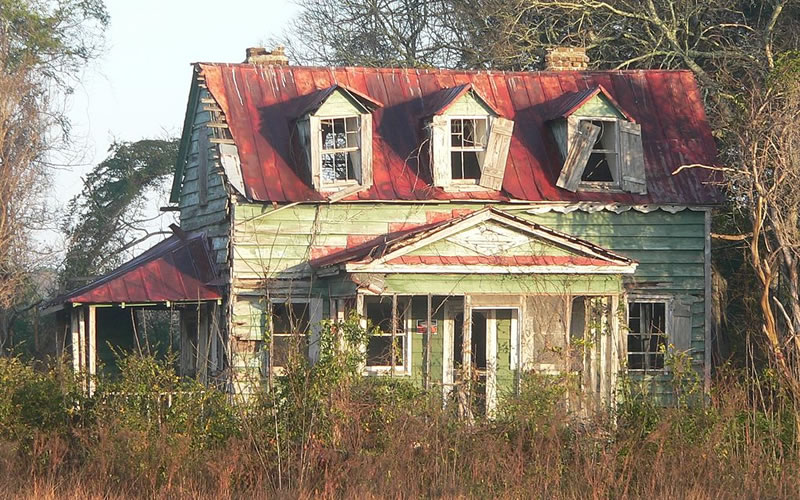
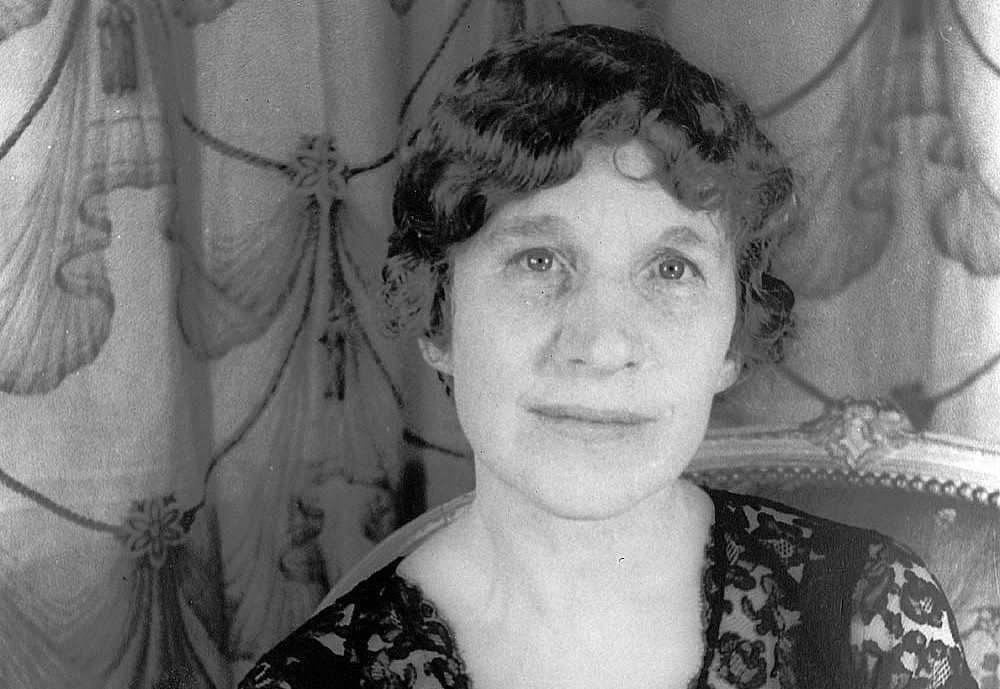


 We Can Do Better, South Carolina!
We Can Do Better, South Carolina!
























